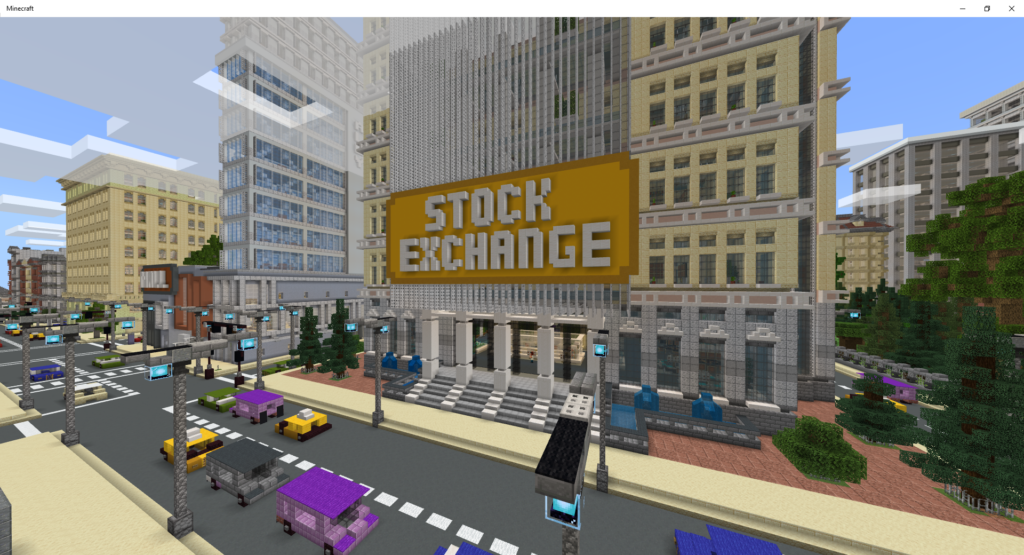According to several reports, Minecraft is the most successful game of all time in terms of copies sold worldwide. The once-popular sandbox game, however, is losing traction in recent years. There are many reasons behind the decline, and we shall be discussing all of them going forward.
Remember your early 2010s gaming days? If you didn’t fall prey to the Minecraft fever, you were probably living under a rock.
It’s 2023 now and an important question stares us in the face – what happened to Minecraft?
No need for a heart attack. Your favorite pastime from the good old days is not going anywhere. The game is still running actively and is readily available for enthusiastic buyers.
But remember how in the previous decade you couldn’t walk five miles without someone talking about their Minecraft world? That does not happen anymore. And while you were never interested in hearing about fantasy castles and mixing tables, you kind of miss it.
And so, you logged on to your computer and are trying to satiate your curiosity. Why has Minecraft stopped working for the modern market?
Let’s find out.

Minecraft – The Harbinger of the Golden Age of Gaming
At first glance, Minecraft didn’t look like much.
When Mojang Studios first developed the vast, open-world sandbox game in 2009, nobody expected it to disrupt the market. Minecraft only witnessed its release to the public in November 2011, after a couple of years of tests and improvements.
Fast-forward to today: Minecraft is the real deal. The game sold over 238 million copies since its inception. In 2021 alone, Minecraft had 140 million active users every month, a whopping figure. The record becomes more astonishing when you release the game is still dominating after a decade of its release.
You must be wondering – if the game is still so popular, what even is the need for writing this blog? But if you knew Minecraft as it was during its heyday, the difference is night and day.
The whole of the internet, including PewDiePie and his videos, streamers on Twitch, and every youngster spent hours on end creating their own version of reality on Minecraft. Considering the craze, the recent form (especially in 2022 and the opening months of 2023) is disappointing.
But before we talk about Minecraft’s Kryptonite, let’s first analyze what made the game different from so many others in the market.
The Reason Behind the Craze
If you’re a graphics merchant, you wouldn’t want anything to do with playing Minecraft. The game is literally a collection of three-dimensional blocks acting as characters, animals, and landscapes.
You’re not getting any high-end textures that will take three hours to render on your computer. You won’t get any HD characters and impactful storylines like in “The Last of Us”, one of the most popular games of the previous decade.
And yet, Minecraft still toppled all the other games in the market to usurp the throne. Why?
Minecraft followed the sandbox genre. Basically, the player had all the creativity in the world to alter the surroundings and various other elements of the game. It was open-world, and the players could do anything as per their will.
The three-dimensional world had an infinite map filled with characters, animals, and villages. The players had to discover and extract raw materials, use them to make tools and items for protection, build houses and other structures, machines, and so on.
The survival aspect of the game is what appealed the most to the majority of the fans. People felt in control of their characters and liked to make efforts to replicate a rough, primitive lifestyle where survival of the fittest reigned supreme.
Apart from the survival mode, Minecraft had several other game modes. The multiplayer option became a huge hit among online streamers and YouTube content creators. The creative mode was a respite from all the hostility, allowing users to display their creativity by using unlimited resources for building anything.
Apart from these eye-catching game modes, Minecraft also offered miscellaneous content that attracted several users. The community built several mods, skins, servers, and texture pads to enhance the gameplay and user experience.
With so many people, apart from the original developers, involved in making Minecraft better and better, it was hard to resist jumping on the bandwagon.
RECOMMENDED READ: Zombie Farm Update
Minecraft Through the Ages
We’re finally there – the answer to the ultimate question.
But to understand how Minecraft is doing right now, we must also be well-versed in the game’s past. And don’t worry, this is not going to be a boring history lecture.
The tale of Minecraft is as interesting as the game itself. Don’t believe us? See for yourself.
It Begins in 2009
The early 2010s defined the golden era for computer and console gaming. But the trend started in 2009 itself – the year of revolution for the industry.
At this time, developers were trying their best to experiment with ideas, combining different genres and types to create the ultimate game.
One such person was Zach Barth, the creator of Zachtronics. The innovative game developer came up with Infiniminer, a sandbox game following blocky textures where players had to dig deep into the earth and search for useful minerals.
The game served as an inspiration for Minecraft. Markus Persson, another innovative game developer at that time, took a liking to the concept of Infiniminer and decided to take it further.
He came up with another sandbox game. It combined the thrill of first-person perspective and open-world gaming at a reasonable frame rate. That marked the birth of Minecraft, even if Persson hadn’t given a formal name to his creation at that moment.
The early reviews of the ‘still-developing’ model were great. Persson then decided to leap into further action.
The Alpha Release
Even after the early critical acclaim of Minecraft, the game still required a lot of developments and upgrades.
At this point, Persson made a drastic business decision. He decided to release the paid Alpha version of the game. In his reasoning, he explained that the move was necessary as he believed that Minecraft would never be complete if he didn’t have the money to carry out the operations.
Thankfully, the gamble worked.
Usually, when a relatively unknown game with primitive features enters the market, people begin to question the developers. With Minecraft, that was hardly the case.
The Alpha version was live on 13 June 2009. In a little less than a month, the market exploded, buying over a thousand copies of the game in a short span. At this point, over 20,000 new players registered on Minecraft as active users.
The scale was phenomenal. As Persson now had the cash and backing of the fans, he decided to shift his focus to the game’s development and reduce the time he gave to his day job for sustenance.
After several months of updates and improvements, Minecraft released Survival Mode. After that, Minecraft became a proper, all-rounded game, and not just a neat pastime for avid computer users.
By 2010, Minecraft became so successful that Persson had no problem leaving his day job altogether. And that marked the start of the golden age of gaming and Minecraft.
POPULAR READ: SHEIN Sunglasses Update
The Fairytale Continues
Mojang, the video game company headed by Persson, became a global brand with the release of Minecraft.
In 2011, the game that started in a garage had successfully registered over a million active users. The reviews were raving; everyone simply loved the game.
Persson, however, knew that the success was only temporary. There were still improvements to be made.
The primary problem, according to him was the outdated use of Java. In 2009, the programming language was perfect for a small-case game. But now, Minecraft was global and the code was simply awkward by modern standards.
But there was an upside to this weakness – it build the first-ever Minecraft community. Java allowed users to make modifications and tweak the game as per their own wishes and requirements – a fact that resulted in positive success for the game.
But still, Java’s overheads were too complex for a sustainable future. For further scaling, Persson decided to work on a solution – The Minecraft Pocket Edition.
A New Era
Minecraft Pocket Edition had a sluggish start. There were some lag problems, bugs, and glitches that needed addressing. But the inclusion of C++ coding made everything simpler.
Soon after, Minecraft released the Console Edition, also written in C++. Despite these positive developments, Minecraft never really discarded the Java edition, a move that translated positively for them.
The development process continued, adding new features and updates every week.
But at this point, Persson decided to part ways with Minecraft. His interest, he declared, was in creating new games, and not maintaining old ones.
As a replacement, Jeb took over the game’s development project and is still the head today.
The Minecraft Empire
Forget the fact that Minecraft became the all-time top-selling game in the market. Its influence expanded beyond the scope of sales.
Minecraft merchandise skyrocketed; the partnership with LEGO became immensely successful; YouTubers and streamers made content on Minecraft all the time. At one point, all of PewDiePie’s Minecraft-related videos hit the top spot in the trending section.
In little time, Minecraft became more than a game – it became an experience.
Minecraft’s Downfall – Is The Game Dying?
Minecraft’s popularity is not as it was in 2019 or even 2020. A couple of years ago, Minecraft had 140 million users playing the game on a monthly basis, still an impressive figure. But the numbers are slowly declining.
Above all, Minecraft is not a popular term on the internet anymore. It’s safe to say, therefore, that the Minecraft trend is a thing of the past.
Here’s why:
Bugs and Glitches
Recently, Minecraft players are experiencing huge turmoil in terms of gameplay interruptions. Constant bugs, server crashes, and lagging problems are common.
In such a scenario, it wasn’t optimal for streamers to make Minecraft-related content. The hype, therefore, started dying.
The “Cool” Factor
In most places, people consider gamers “uncool”; that’s just the popular teenage perception. In the last few years, people started seeing Minecraft as something uncool and nerdy.
Under pure peer pressure, several active users stopped playing Minecraft altogether.
Stringent Competition
Minecraft was once the ruler of its own kingdom. Now, there are several other competitors in the industry.
Minecraft’s blocky texture and low-graphic requirements are becoming outdated. Nowadays, gamers are focusing more on realistic gameplay features and high-definition graphics.
Amid such a shift, the gradual decline of Minecraft was inevitable.
The Time Factor
Minecraft had a smooth run. But now, its lifecycle is coming to an abrupt end. Despite the many updates and new features, loyal players are getting tired of the same age-old concept.
As per several reviews, people who still love Minecraft cannot stand playing the game for more than a couple of hours per week because of its repetitiveness.
Will Minecraft Die? Our Honest Opinion
Minecraft is indeed on a downward spiral. But to imagine the game disappearing completely is a bit far-fetched.
Minecraft established an empire in the last decade. The LEGO toys and merchandise of the franchise are still running riot in the market.
Even the customers who are not playing Minecraft actively anymore still love and cherish the game.
So, purely out of the respect for the mark Minecraft has left on the world, the chances of the game dying are infinitesimally small.














